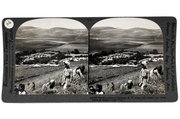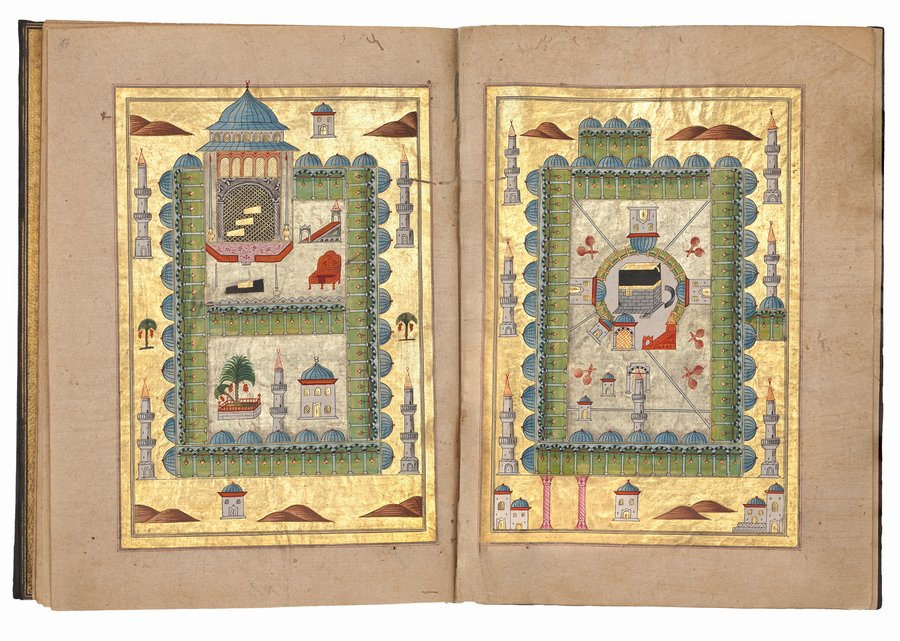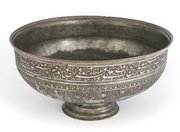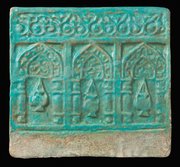
Copy of the Dala’il al-Khayrat (Ways for the Good Deeds')
Museum of Islamic Art
- Title:
- Copy of the Dala’il al-Khayrat (Ways for the Good Deeds')
- Original Author:
- al-Jazuli
- Calligrapher:
- Al-Hajj Muhammad Amin
- Illuminator:
- Al-Hajj Hafiz Muhammad Nuri
- Production place:
- Istanbul
- Date:
- 1801
- Period:
- Ottoman
- Title:
- Copy of the Dala’il al-Khayrat (Ways for the Good Deeds')
- Original Author:
- al-Jazuli
- Calligrapher:
- Al-Hajj Muhammad Amin
- Illuminator:
- Al-Hajj Hafiz Muhammad Nuri
- Production place:
- Istanbul
- Date:
- 1801
- Period:
- Ottoman
- Material:
- Paper, Ink, Gouache, Gold, Leather
- Technique:
- Bookbinding, Calligraphy, Illumination, Tooling
- Dimensions:
- 23.4 × 16.7 × 2.8
The Dala’il al-Khayrat (‘the Ways of Edification’) is one of the most successful prayer book in the Islamic world, often carried by pilgrims on their journey to Medina. It reads as a long litany of blessings over the Prophet Muhammad, to be read as daily prayers at the Mosque of the Prophet. The text was written by the Moroccan mystic, Abu ‘Abdullah Muhammad Ibn Sulayman al-Jazuli, who was killed in 870 AH / 1465 CE. Member of the ṭariqa shadhiliyya (Sufi order), he is said to have stayed in Mecca and Medina for a number of years. This Ottoman copy was produced by Mehmed Emin, a highly respected calligrapher who was the head clerk of the Imperial Chancery in Istanbul at the time the manuscript was completed. Dala’il al-Khayrat manuscripts include illustrations showing elements of the Prophet’s Mosque in Medina, including the minbar, the mihrab, the tomb of the Prophet and those of Abu Bakr and ‘Umar, sometimes associated with views of the Great Mosque of Mecca. Here the illustrations of the Masjid al-Haram in Mecca (f. 16 v.) and the Prophet’s mosque in Medina (f. 17 r.) combine a bird’s eye view perspective with two-dimensional aspects. The folio 3 r. bears the depiction of a pink rose, a well-known metaphor of the Prophet Muhammad’s physical attributes often represented in Ottoman manuscripts.



